CREATIVE
19 Apr 2023
DOING THE MATHEMATICS WITH GRANDMA3
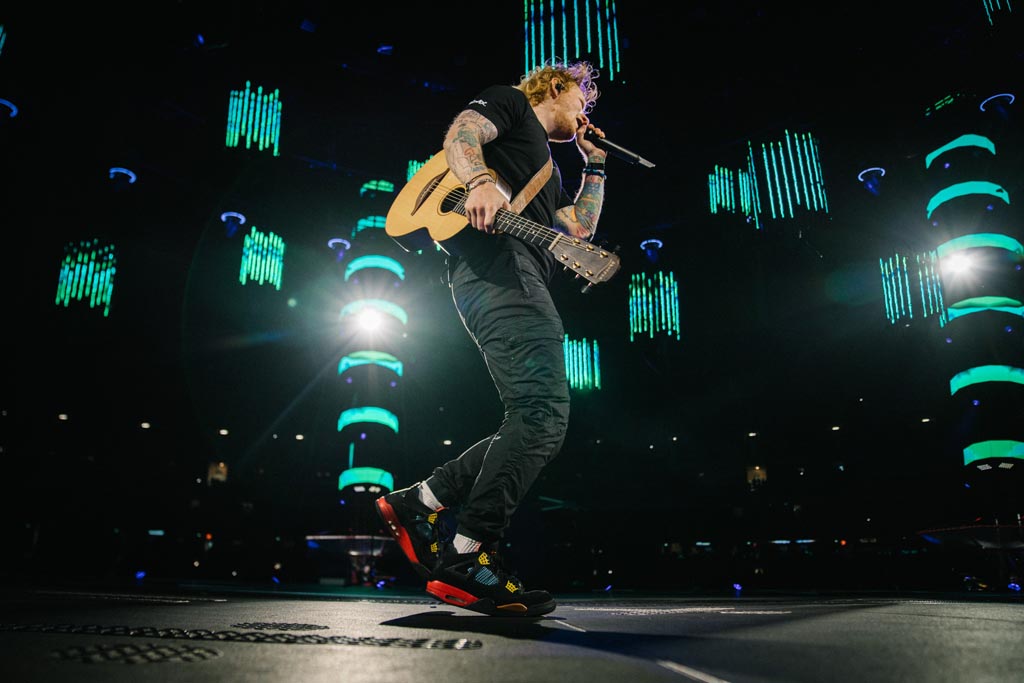
Subscribe to CX E-News
APAC’s MA Lighting Distributors Converge on Melbourne for grandMA3, Matt Jones, and Ed Sheeran
28 Feb to 3 March was MA Lighting APAC Distributor Week in Melbourne. Hosted by Australian and New Zealand MA distributors Show Technology, around 45 staff members from Vietnam, Indonesia, Korea, Japan, India, China, Singapore, Malaysia, and Taiwan joined the locals for tech training on the grandMA3 platform, networking (in both senses), and some bonus sessions, including two with Ed Sheeran’s touring lighting director Matt Jones, and one with LD Jarrad Donovan on lighting for worship.
Daniel Kannenburg, Brand and Product Manager with MA Lighting was one of four MA employees hosting the event. “At MA, we believe one of our most important jobs is to train our distributors,” states Daniel. “At this meeting, we’re covering grandMA3’s new features and functionality, networking, and other topics like GTDF (General Device Type Format) and MVR (My Virtual Rig) files.”
The focus on MA3 has become particularly topical as the industry takes up the platform en masse. “It’s now what everyone’s using,” explains Daniel. “The uptake started slowly after the release in 2018, but now it’s past critical mass. Every scale of show, from smallest to largest, is running on grandMA3.”
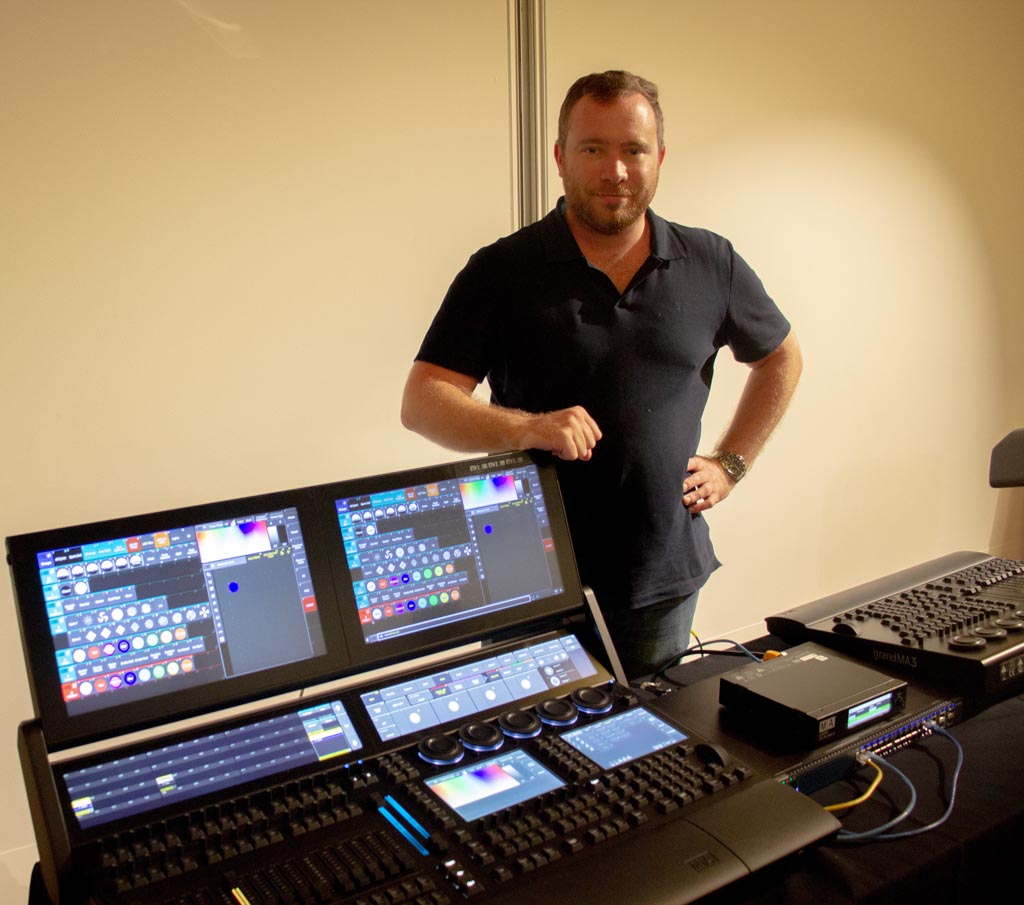
Ed Sheeran’s touring lighting director Matt Jones made the upgrade from grandMA2 to grandMA3 during the pandemic slowdown, and uses grandMA3 on the current Ed Sheeran + – = ÷ x (Mathematics) tour. Matt originally hails from Melbourne but has spent the best part of the last 15 years working out of the UK. Starting out at English production legends Neg Earth, Matt has gone on to work on major projects including Ed Sheeran’s 2017-19 ‘Divide’ tour, Expo 2020 Dubai, and The Australian Open.
“Back in the design stage, the Production and Lighting Designer for the Mathematics tour, Mark Cunniffe, asked me if I wanted to use grandMA3 on the tour, and I said I was open to it,” recalls Matt. “If we didn’t adopt grandMA3, we would have put ourselves behind, technically speaking. It was a group decision between Mark, our programmer Alex Passmore, and myself, and we went for it.”
When Matt encounters Lighting Designers, Programmers and Operators who are hesitant to move to the newest version of grandMA, he has this advice; “If people think they’re not ready or its too hard, it’s just not the case,” observes Matt. “You can get support, and there’s fantastic resources available for learning. I really got a lot out of Lighting Designer, Director, and Programmer Cat West’s instructional videos, particularly the ones about grandMA2 to grandMA3 transition. They gave me confidence to do a stadium sized show on the platform. People are often scared of change, but fundamentally, everything is still the same in grandMA3, but with new features, new nomenclature, and new menus.”
Matt’s favourite new grandMA3 feature is Grids. “Grids are extremely useful,” extols Matt. “I find I’m able to have much more complex fixture selections and groupings, and creating them is much more intuitive. The next is Phasers; the workflow isn’t complex, but allows for more complex outcomes and results, when compared to grandMA2. It’s all a much more intuitive approach to the idea of a matrix, and working in the x, y, and z planes. I think Grids and Phasers are the two best arguments to upgrade. Staying back on grandMA2 would only put you behind professionally.”
It’s not just the huge stadium tours that Matt is using grandMA3 on. He’s deployed it on tours for Australian acts including The Rubens and The Cat Empire, and recently used it for a gala event at Melbourne’s own NGV. “I had the pleasure of lighting the Alexander McQueen exhibition gala launch,” comments Matt. “It was a nice way for me to try out version 1.8 of grandMA3 and play with some of the new features. As usual on this type of gig, we didn’t have much time to get up and running, and I found the new features in 1.8 very useful, as I could create the show a lot faster than in the previous version.”
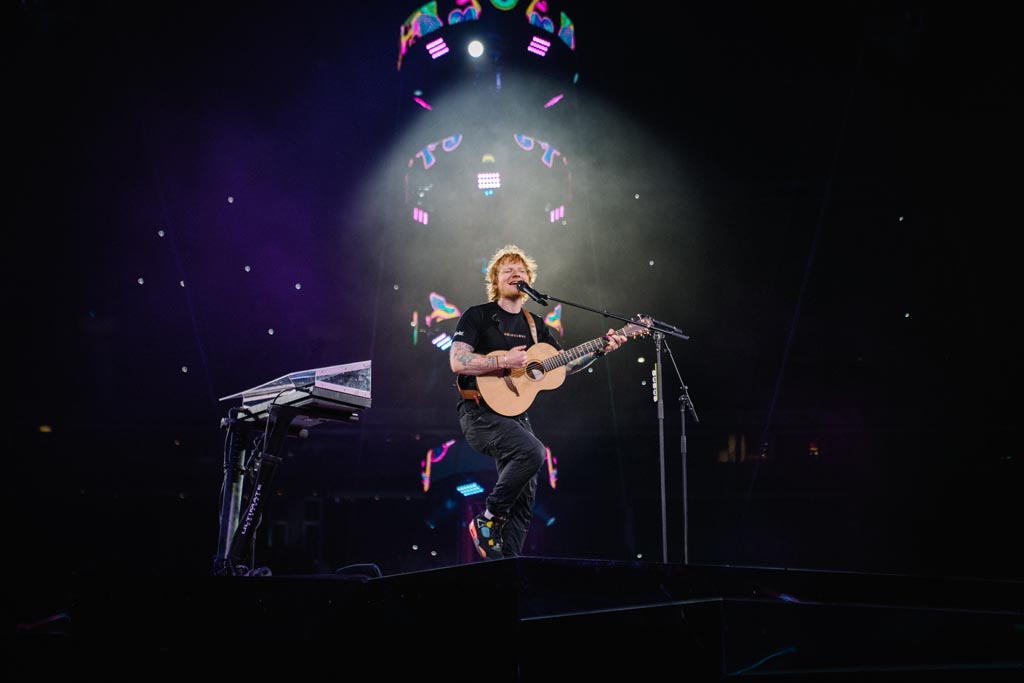
+ – = ÷ x – The Numbers
To say that Ed Sheeran’s Mathematics tour is big is to indulge in wild understatement. Everything about it, from the structural engineering to the crowd size, is jaw dropping. Next to almost 550 square metres of ROE LED, Matt is running a lighting rig that includes 138 Ayrton Domino LTs, 48 Ayrton Perseo Profiles, 22 laser-source Ayrton Cobras, 162 GLP XDC1s, 164 Astera AX2s, and 72 Astera AX9s.
“Were running two grandMA3 full size for lighting control, two grandMA3 fullsize for video, six grandMA3 processing unit XLs, with one at each of the big red masts” outlines Matt. “There’s another inner node under Ed’s central stage, which receives MIDI commands from Ed’s loop pedal. We’re also running a Follow- Me followspot system. This is a very structured show, with pyro, automation, and video, but there’s absolutely no timecode; it’s all me pressing buttons, or taking MIDI triggers from Ed. The entire MA network backbone is running on its own Luminex network switches.”
Matt emphasises the need to have a structured approach to programming in grandMA3; “But that’s always been the case,” he clarifies, “and you should always label things! For Mathematics, each song has its own Page and Sequence, and each song has bumps and hits. Each song has its own Macro that changes windows to give access to specific Groups, Presets, and Sequences. In programming, we found a combination of Groups and Grids helped create dynamic looks very quickly. We also made good use of Recipes; each Recipe may have 20 different Group combinations.”
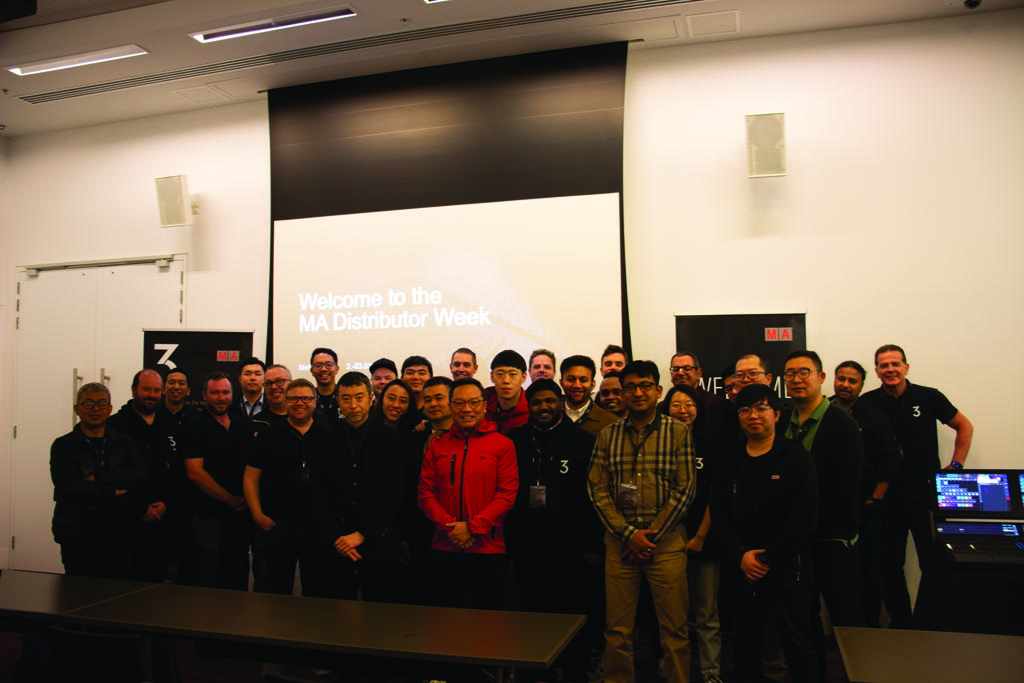
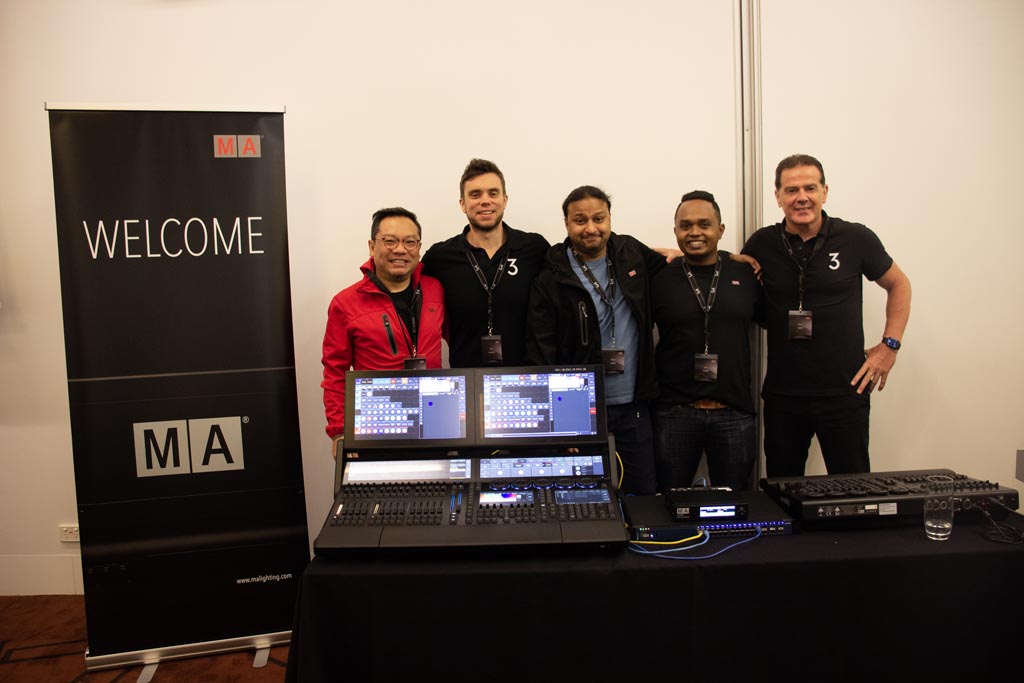
Hope Unlimited India), Luke Chikkala
(Tech Support, MA Lighting), Franco Zaghini (Director of Business Development, International Sales, MA Lighting)
GRANDMA3’S NEW TRICKS
Phasers
Phasers are a powerful tool in grandMA3 that allow lighting designers to create complex visual effects and sequences with ease. A Phaser takes the well-known programming concept of presets and palettes and evolves beyond simply static looks with all new dynamic capabilities. One of the key benefits of using Phasers in grandMA3 is the ability to create complex lighting sequences with just a few clicks. Rather than being limited to applying basic maths curves or high and low points to values like a traditional ‘effects engine’, Phasers allow multiple existing presets and values to be sequenced together to create complex dynamic effects and dynamic transitions which can be applied to multiple fixtures in seconds. Another key benefit of Phasers is the ability to easily synchronise these dynamic effects with music by allowing speed to be lined up with the measures or bars of the music itself.
Grids
The new Selection Grid concept allow users to control how effects and timing are executed over a selection of fixtures with great precision. A Selection Grid is a virtual coordinate system that can be used to arrange the selection of fixtures in a true three-dimensional space.
The distribution of things like Phaser looks, transition timing and delay sweeps can then be applied over any axis of that space. This, coupled with the well-known MAtricks, allows users to realise complex dynamic looks over big groups of fixtures, or multi-element parts of fixtures with ease without needing to resort to bitmap effects or endless math calculations and complex layout views. Selection Grids can be used to create a wide range of lighting effects, from simple static patterns to complex moving sequences. For example, a lighting designer could use a Selection Grid to create a dynamic pattern of moving lights that sweep across the stage, or to create a series of static fixtures that form a precise geometric pattern. For fast recall a Selection Grid can even be stored as a fixture group, meaning the same selection of fixtures could be recalled in numerous Grid layouts for even greater dynamic flexibility.
Recipes
At the heart of the console, the powerful new feature bringing all of these elements together is the Recipe. Recipes allow building block ‘ingredients’ such as Selection Grids, Phaser presets and MAtricks timing to be combined and literally cooked into a complex stage look quickly and easily. These cooked stage looks can then be incorporated into cues and sequences and used over and over again with multiple fixture groups. Where the true power of Recipes lies is in the fact that the actual selection of fixtures used can be changed or replaced on a whim without any show reprogramming or cloning required. A touring designer could have eight lights hanging in a club one day and 100 fixtures on a festival stage the next and all that is required is to update a single fixture group. All the show programming will instantly be transferred to the new selection of fixtures including complex dynamic looks like fans, wipes, and builds.
Subscribe
Published monthly since 1991, our famous AV industry magazine is free for download or pay for print. Subscribers also receive CX News, our free weekly email with the latest industry news and jobs.




